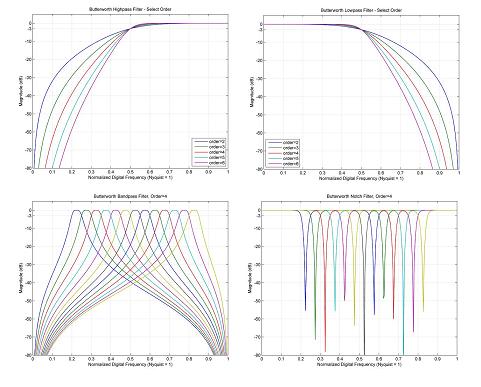The ColdFire® DSP Library contains digital signal processing algorithms optimized for the ColdFire architecture. These algorithms are implemented directly in assembly for computational efficiency and then encapsulated into a simple C interface. In addition, a large number of predefined and pretested filter configurations are provided in order to reduce the need for a user to design digital filters.
The library is designed to enable embedded sensor applications with basic signal processing functionality, but without the need for a DSP co-processor. By taking advantage of an on-chip multiply-accumulate unit (MAC), a ColdFire microcontroller can efficiently execute DSP algorithms.

